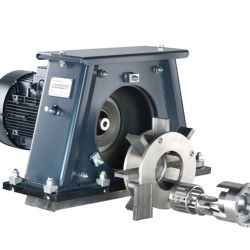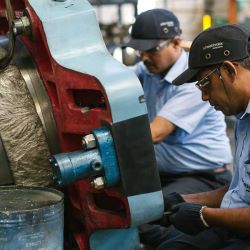Made in the USA - The rebirth of the North American foundry industry
Until recently, the foundry industry had been in decline in North America. Cheap labor costs in countries like China saw companies looking overseas for foundry requirements. Demand dropped and many foundries in the US closed.
The tide, however, is beginning to turn. Overseas labor costs have risen and this, combined with the high costs of shipping heavy castings over long distances, means it’s becoming more cost effective to bring foundry work back home.
The last year or so has seen demand for US-made foundry products soar, but there are now fewer foundries to do the work. The result: the remaining foundries are ramping up their production and running longer hours than ever before.
Fast maintenance, less downtime
In parallel with this ramping up taking place, we’ve been seeing an increasing requirement from customers to ensure their equipment is as low-maintenance as possible.
Foundries are often running for up to 13 days at a time before scheduled downtime for maintenance. This means they need machines which can last the distance – and if something does break, they want it to be quick to fix.
Much of our focus in designing new machines, parts and equipment has been on reducing maintenance times by making maintenance more straightforward.
Our new Barrel Blast machine range, for example, has been designed with several easy maintenance features. The biggest change is in the time it takes to change the rollers in the machine. In the past, this would have been a day’s worth of work – at least eight hours – but now they can be changed in just an hour. In addition, there are no replaceable seals between the barrel and barrel drive on the machine, which means no leaks and no need to replace seals.
Another illustration of this trend is our new COMET HD blast wheel – a complete rethinking of the way a blast wheel works. We’ve introduced several features to the wheel that have the potential to reduce maintenance time by as much as 30%. We’ve made assembly quicker and more straightforward, as well as introducing easier access to the wheel’s inner workings for fast maintenance and less downtime.


Durability is key
Of course, alongside easy maintenance, the other key contributor to machine uptime is durability. Not every machine is able to last through a 13-day shift. As a result we’ve seen our heavy-duty (HD) line in high demand again. To make these machines even more durable, we made a couple of strategic changes throughout the range.
Even seemingly small changes can make a big difference in increasing the durability of a machine. For example, we’ve introduced extreme-duty bearings on all new machines. These are more durable, have better seals and overall last longer, meaning fewer breakdowns and less maintenance.
Training maintenance teams is also a key part of ensuring the durability of equipment – advising customers on how to get the best from their parts and machines.
Let’s come back to the bearing as an example. Over the years we’ve come across many people who grease bearings in the machine, which is a big mistake. Greasing a bearing can draw dust into it and it will quickly fail. Little mistakes like this can have a big impact on the amount of maintenance a machine will require.
Getting a quick diagnosis
Fast maintenance and repair turnarounds also need better insight and quick diagnosis of issues in a machine. The faster you can spot the problem, the sooner it can be fixed.
Improvements in machine electronics and the introduction of cameras and sensors throughout our equipment is helping to address this problem. The cameras and sensors give up-to-the-minute insight on what is happening within the machine, and allow any potential problems to be spotted quickly.
At the same time, electrical systems are becoming increasingly sophisticated and in more and more instances are now able to identify and diagnose any problems in the machine. This can significantly reduce repair times, as in the past half the challenge was finding what was wrong in the first place.
It’s exciting to see the resurgence of the foundry industry in North America, and with it the innovation and developments it’s bringing to blast technology. We’re looking forward to seeing what the next decade will reveal.


